Things coincide. A bit of talk on best weight for a Warrington Hammer. A Warrington Hammer is a Cross Peen designed for driving tacks. The idea is that the thin end can slide between your fingers as you hold a tack. It has been on my list of classic tools, but until I read Paul Sellers’ superb article on them, I did not have any good criteria for choosing one. He likes them from 8 to 10 oz, so this gave me a starting point.
While I don’t have a need for one, I do drive tacks and this may be a safer and more efficient way to drive them. So I may actually need one without knowing. There have been a few discussions of them, so the impulse urge to have one is suddenly there.
Meanwhile, I have an old couch that is going to be a pain to get through the door. I brought it in, back when my back allowed me all sorts of contortions, but now I have to be careful. So I am going to take the couch apart first. This couch is a leather couch I got in exchange for some programming ages ago. Taking it apart reveals all sorts of weirdness. It is made of ash, red oak, plywood and pine pinned together with zillions of tacks, nails, staples, brads and odd fittings. No saw will survive this long and the angles prevent use. So I decided to hack it apart. Not by swinging an axe, but by putting a cheap axe/chisel/blade down and pounding it with a 3lb sledge. With that and a few pry bars, I figured i could do it safely.
So I go to a dollar store that has a bunch of cheap odd tools, all for $1.09 each. I get a couple of hatches and a couple of hammers to sharpen into handled wedge/chisels.
So first I try pounding a hatchet into a joint.
The axe, as you can see fractured. This tool is total junk, more dangerous than functional. I will be throwing both axes away.
As I was nervous, I decided to grind down the black finish on the hammer as I sharpened the blunt pointed end. I checked the sparks out and looked for cracks. It seemed like decent enough steel, but not high carbon enough to really hold an edge for long. As you can see, I heated it to amber to make sure it was not brittle. Behind it is the sledge I pounded it with. Behind the sledge is the couch of infinite staples.
After doing rather superb work, the handle broke. It did not fly off, but you can see, the handle is bent and fractured.
The edge went through nails, brads and staples. The edge became deformed more than it fractured. So this is soft malleable steel. Not bad for a hammer, but the faces may need a bit of hardening.
Note the difference between the slight chipping and the way the axe fractured.
Here is the back of my wedge after having been pounded on rather fiercely.
So while being rather pleased with these hammers, I decided to get a few more and make some decent tools out of them. 300 grams is about 10.6 oz. so after grinding the rough surface and shaping them a bit, I ended up with a few nice hammer heads. The 12 oz label on the hammers is misleading. A hammers weight rating should be reflected by the weight of the head, not the entire hammer.
The top one is ground down to make it lighter. The bottom two I decided to retain a bit of the stamp showing the weight of the hammer. The bottom one I decided to get a bit artistic with and gave it a few curves. This will give my hand more clearance and reduce the weight of the hammer a bit more than the simple grinding I did on all of them.
Then I heated up the heads and then quenched them while glowing red. I used water for these.
After that I heated up the other end and quenched it too. This one, I had to reheat as it was cooling while I got the camera ready.
Here they are discolored after quenching. Right now they are rock hard and brittle, so I have to be careful. Because they are so hard, they mangle sandpaper quickly. The best way to get them back to shiny silver is to power buff them with green compound.
They have to be shiny silver so that the tempering color will be visible.
I heated these from the center, until the ends where amber/gold.
While not resembling any marketed Warringtons, I think they will do nicely. I am going to shape another to be a straight peen hammer for adjusting plane blades. That one will stay soft so that the plane blades are not damaged by it. The others will have both tips heated to a rosy glow and oil quenched. Then I will shine them up again, and bring the ends to a nice straw color about like the middle one. This way the heads will be hard and not show marks, while the bodies remain softer and unlikely to fracture. Then I will make some nice ash or osage handles for them.
I will also keep a couple for sharpening and taking ornery stuff apart. That worked pretty well.
Bob
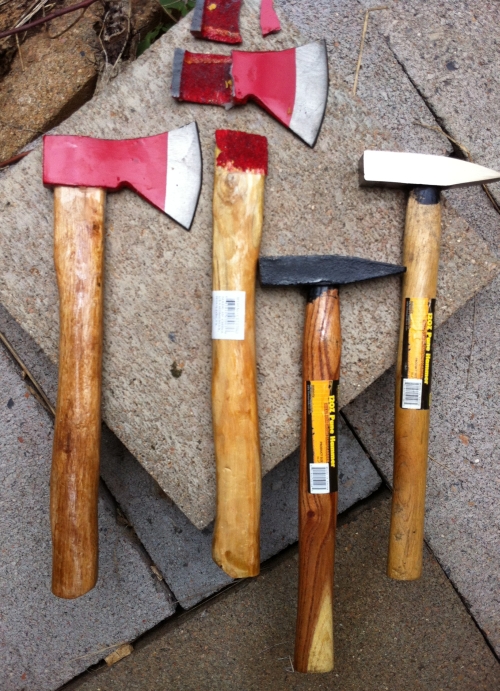

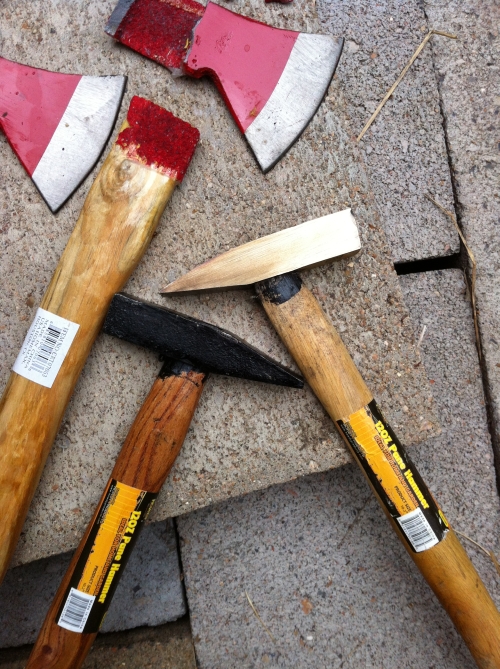
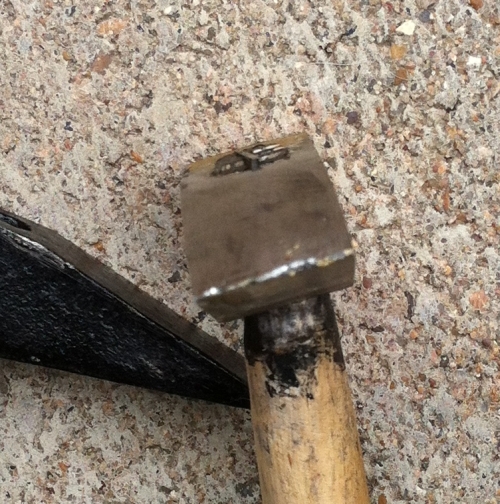
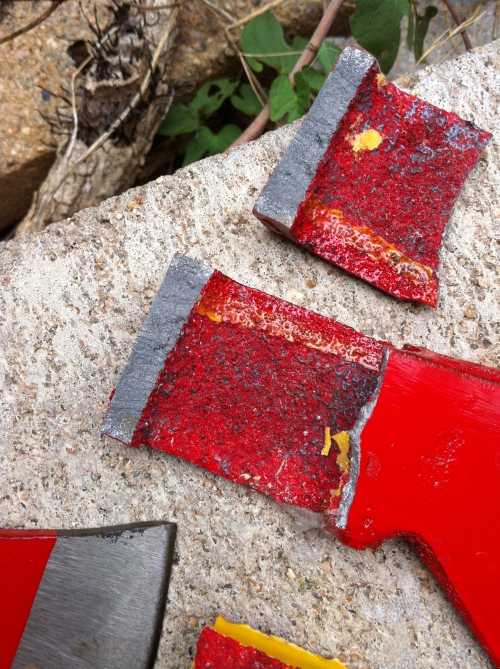
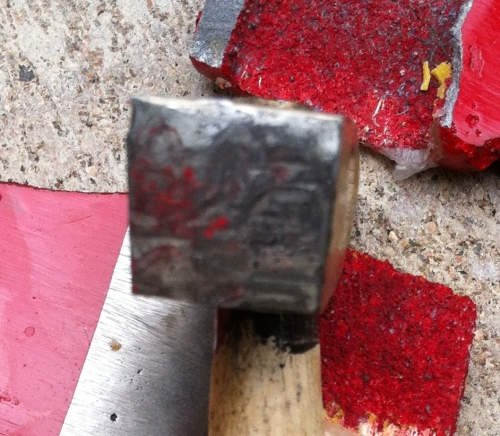
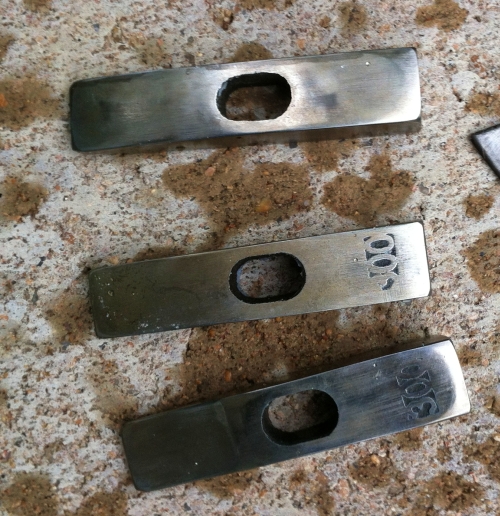
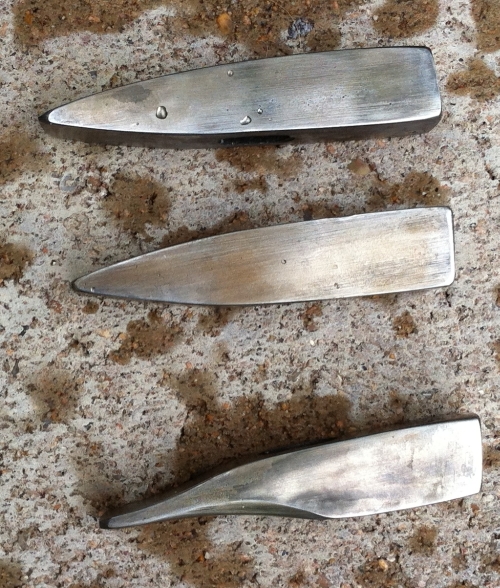
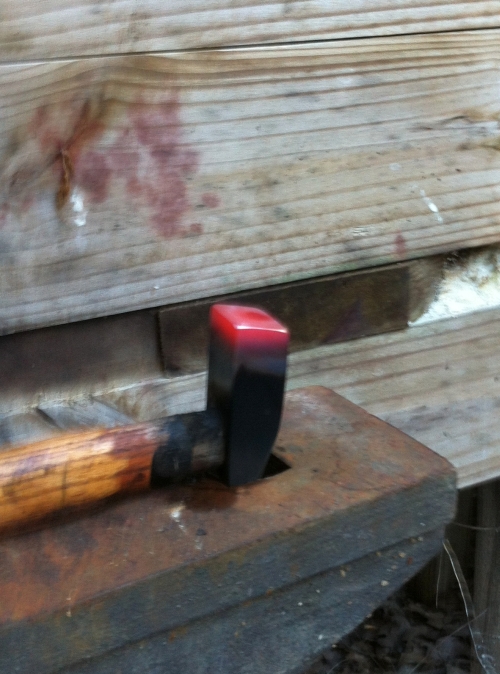


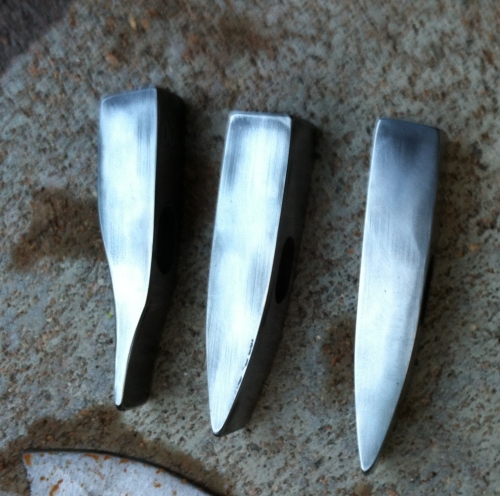

 A page Dedicated to My Writing
A page Dedicated to My Writing
Mercy Bob;
That is just an outstandingly fine article! Your pictures leave absolutely nothing to the imagination, every little thing is shown clearly…. lotsa web guys could learn from this….
Skip
hi im a chisel enthusiast and I wish to know where do you like to purchase your chisels from and what is your favourite brand?
I think the best bet would be to check with Schtoo at http://www.toolsfromjapan.com/store/ and see what he has. Another good source is toolsforworkingwood.com Neither of these sources put up with low grade tools.
Bob